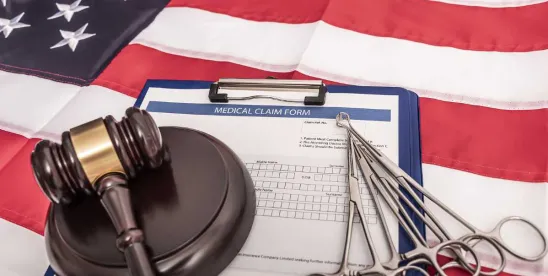The U.S. Supreme Court held that a group of doctors, nurses, and medical associations did not have the right under the U.S. Constitution, a doctrine known as “standing,” to challenge Food and Drug Administration (FDA) regulations governing the use of the abortion drug mifepristone in FDA v. Alliance for Hippocratic Medicine, No. 23-235 (June 13, 2024). This ruling could make it harder for organizations to successfully challenge corporate diversity, equity, and inclusion (DEI) initiatives.
Standing and Why It Matters
The concept of standing is fundamental to federal court jurisdiction. Article III § 2 of the U.S. Constitution limits the issues federal courts can resolve to “cases” (lawsuits seeking to protect and enforce rights or to prevent and punish wrongs) and “controversies” (disputes or disagreements between parties). To qualify as a case or controversy, a plaintiff must have a personal stake in the outcome. In the words of Supreme Court Justice Antonin Scalia, to bring a federal lawsuit, a plaintiff must answer the basic question that embodies the concept of standing: “What’s in it for you?”
To establish standing, the plaintiff must demonstrate:
- The plaintiff suffered or likely will suffer an injury in fact;
- The defendant caused or likely will be the cause of the injury; and
- The requested judicial relief likely will redress the injury.
If the plaintiff cannot satisfy all three requirements, the court must dismiss the case for lack of jurisdiction.
Injury In Fact
An injury in fact must be a specific and actual harm. A general complaint or harm that may happen is not an injury in fact. As Justice Brett Kavanaugh wrote in Alliance for Hippocratic Medicine, the doctrine of standing “screens out plaintiffs who might have only a general legal, moral, ideological, or policy objection” to a particular action.
In cases involving challenges to DEI initiatives, courts have ruled the plaintiffs failed to demonstrate an injury in fact because they could not show they would have received the benefit sought in the absence of the alleged discrimination. In two cases against the same defendant, White plaintiffs alleged that a grant program available only to Black, Latinx, and Native American applicants was unlawful race discrimination. Courts in both cases ruled that the plaintiffs lacked standing because they failed to show the defendant would have chosen them as grant recipients were it not for their race, making the plaintiffs’ alleged injury too speculative to be an injury in fact. Similarly, the U.S. Court of Appeals for the Sixth Circuit dismissed a case for lack of standing where the plaintiff failed to allege they met the non-race-related requirements for that grant and therefore failed to allege an injury in fact.
In Alliance for Hippocratic Medicine, the Alliance argued the loss of considerable resources spent unsuccessfully opposing the FDA’s regulation constituted an injury in fact. Rejecting this argument, the Court stated, “[A]n organization that has not suffered a concrete injury caused by the defendant’s actions cannot spend its way into standing.”
Causation
Once a plaintiff has shown an injury in fact, the plaintiff must establish a chain of events leading from the defendant’s actions to the asserted injury. The Court’s analysis of causation in Alliance for Hippocratic Medicine is instructive. The Alliance alleged that the FDA’s rule would injure a doctor’s conscience by forcing the doctor to provide a life-saving abortion to someone experiencing complications from taking the drug mifepristone. The Court emphasized federal statutes expressly and definitively protect doctors from providing medical care that violates their consciences. These statutes break the chain of events that would connect the FDA’s rule authorizing the use of mifepristone to the alleged injury and thus defeat the plaintiff’s attempt to show causation.
Redressability
The third prong of the standing test is whether a court can redress, or cure, a claimed injury. Redressability and causation are closely related. If the defendant did not cause the injury, then the court cannot redress the injury by any order to the defendant. Even if the plaintiff plausibly alleges causation, redressability may depend on the nature of the relief requested.
For example, the U.S. Court of Appeals for the Tenth Circuit found a plaintiff challenging an employer’s mandatory DEI training lacked standing because he could not demonstrate redressability. The plaintiff alleged that the defendant’s mandatory DEI trainings caused him to suffer the injury in fact of a hostile work environment. The plaintiff sought an injunction prohibiting the defendant from using or distributing DEI materials. However, because the plaintiff had resigned from his employment by the time he filed the lawsuit, the court held that a change in the defendant’s policy would not redress any ongoing injury to the plaintiff.
Associational Standing
The Supreme Court has long recognized that, in appropriate circumstances, organizations may have standing to pursue claims on behalf of their members. This is known as “associational,” “organizational,” or “third party” standing and is a heavily litigated issue in organizations’ lawsuits challenging DEI programs and practices.
To prove associational standing, the plaintiff organization must demonstrate:
- The organization’s members would have standing in their own right;
- The interests the association seeks to vindicate are germane to the association’s mission; and
- Neither the claim nor the relief requested requires the participation of the individual members.
Whether establishing standing requires an organization to identify members by name depends on where the plaintiff filed the lawsuit. The Eleventh Circuit held in a 2-1 decision that an organization had standing to sue even though it declined to identify by name any member that suffered an injury in fact. (The dissenting judge observed that the organization offered no good reason for withholding members’ names and suggested that the anonymous members suffered no injury in fact but were merely lending their identities for the purpose of the litigation.)
The Second Circuit came to the opposite conclusion, dismissing an organization’s challenge to a fellowship program for lack of standing because the plaintiff organization refused to name even a single member who had suffered harm. The First Circuit also has held that a plaintiff organization must name an injured individual to support associational standing. The U.S. Supreme Court likely will have to resolve this split in the circuits.
Takeaways for Employers
The first line of defense for employers facing legal challenges to DEI practices is to evaluate whether the plaintiff has the right to bring the case at all. Although standing arguments are fact specific, employers can ensure those who challenge private sector DEI programs have a demonstrable connection to such programs. A successful defense based on an individual or organization’s standing allows employers to evaluate and, if necessary, modify DEI programs to withstand legal challenges.




 />i
/>i

